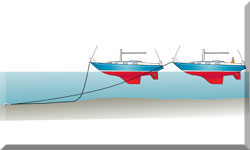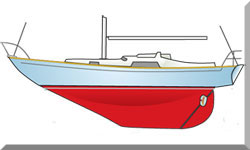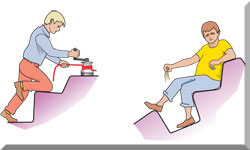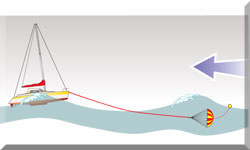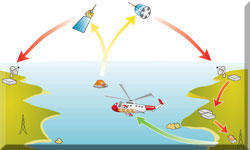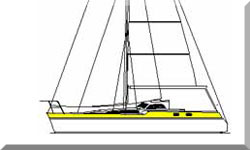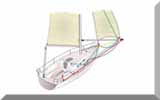Is it safe to be on a sailboat in a lightning storm?
Sailing offers an unparalleled connection with the natural world, a dance with the wind and waves. However, this intimacy with nature also exposes us to its raw power, including the electrifying spectacle and inherent danger of thunderstorms. Lightning strikes pose a significant threat to sailboats and their occupants, making it crucial for we cruisers to understand the risks and take appropriate precautions.
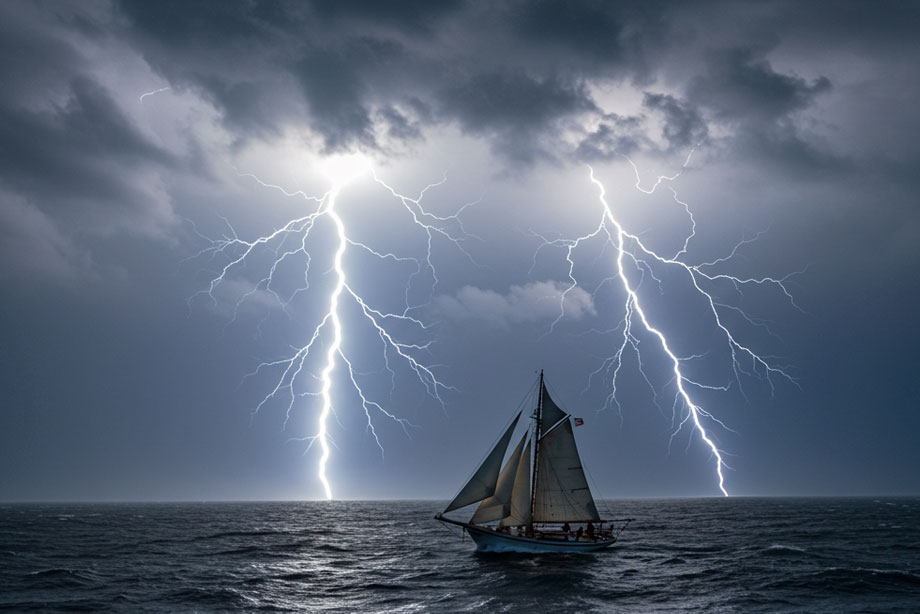 Scary stuff!
Scary stuff!We (Mary and I) were asleep aboard our anchored sailboat 'Alacazam' in Five Islands Bay, Antigua when we were awoken by an ominous roll of thunder. From the cockpit it was clear something special was going on.
It was black out there, but regularly illuminated by violent flashes of lightning directly overhead. It was almost continuous. Occasionally a fork of lightning would strike the nearby land.
Was it dangerous? It certainly seemed that way to us—and more than a little scary!
The Science of Lightning and its Dangers at Sea
To understand the danger, we must first grasp the science behind lightning. Thunderstorms are dynamic weather systems where powerful updrafts carry moisture high into the atmosphere.
Within these clouds, ice particles collide, generating static electricity. This charge separation eventually leads to a massive electrical potential. The discharge we know as lightning occurs when this potential becomes too great, seeking a path to neutralize the charge.
This process involves the formation of a 'stepped leader', a negatively charged channel that zigzags downwards from the cloud, and the 'return stroke', a powerful surge of positively charged current that travels back up the same channel, creating the bright flash we see.
Sailboats, by their very design, are particularly vulnerable to lightning strikes. The tall mast, often the highest point in the surrounding water, acts as a prime lightning rod, attracting the electrical discharge. Furthermore, sailboats are constructed with numerous conductive materials, including the metal mast, boom, rigging, keel, and even wet sails.
These components provide excellent pathways for the electricity to travel through the boat. The presence of saltwater further compounds the danger, as it is a highly effective conductor of electricity, increasing the risk for both the boat and anyone in the water.
Lightning strikes can take several forms, each posing a different level of threat. A direct strike occurs when lightning hits the boat directly, typically the mast. Indirect strikes happen when lightning hits the water or another object nearby, and the current travels to the boat. Side flashes, a particularly dangerous phenomenon, occur when the lightning jumps from the initial strike point to another nearby object, potentially including people.
The effects of a lightning strike on a boat can be devastating. The intense surge of electricity can wreak havoc on onboard electronics, communication systems, and even the mast itself, potentially disabling the vessel. While less common, hull punctures or damage to through-hull fittings are possible, leading to leaks and potential sinking. The risk of fire is also a serious concern, as the high temperatures generated by lightning can ignite flammable materials onboard.
The impact on humans is even more critical. A lightning strike can cause a range of injuries, from minor burns and muscle spasms to cardiac arrest and death. The electrical current can disrupt the nervous system, leading to seizures, unconsciousness, and respiratory failure. Even if not directly struck, individuals near the boat can be injured by side flashes or the electrical current traveling through the water.
Assessing the Risk and Taking Precautions
The cornerstone of safety lies in proactive risk assessment and meticulous preparation. Before embarking on any sailing trip, it is absolutely essential to check the weather forecast. Pay close attention to forecasts for thunderstorms and stay updated on changing conditions throughout your time on the water. Utilize available resources such as marine weather apps, NOAA weather radio, and online weather charts to monitor weather patterns.
Recognizing the signs of an approaching storm is equally crucial. Be vigilant for visual cues such as darkening skies, towering cumulonimbus clouds, and rapid wind shifts. Auditory warnings, like the rumble of thunder, should never be ignored.
A useful guideline is the "30-30 rule": If you can see lightning and hear thunder in 30 seconds or less, the storm is close enough to be dangerous. Seek shelter immediately. If you hear thunder and then see lightning 30 seconds or more later, the storm is further away, but you should continue to monitor it. This simple rule provides a practical way to gauge the proximity of a storm and make timely decisions.
The relative safety of your location also plays a significant role. While harbors offer some degree of protection compared to open water, they are not entirely immune to the effects of lightning. Open water significantly increases the risk due to the lack of nearby grounded objects and the increased exposure to the elements.
Lightning protection systems can enhance safety, but they are not foolproof. Lightning rods, strategically placed on the mast, provide a preferred path for the electrical current to travel to ground. A properly installed grounding system is essential to dissipate the electrical energy safely. While a partially enclosed metal superstructure can offer some protection, it doesn't create a complete Faraday cage.
Personal safety measures are paramount when caught in a storm. If you cannot reach shore in time, stay as low as possible on the boat, away from the mast and any metal objects. Avoid contact with stanchions, lifelines, rigging, and other metal parts of the boat. If the boat has an enclosed cabin, seek shelter inside. Disconnect all non-essential electronic devices to minimize the risk of damage. Under no circumstances should anyone swim during a thunderstorm.
Emergency Procedures and First Aid
Knowing what to do if lightning strikes your boat is critical. Immediately after a strike, assess the situation. Check for any damage to the boat and its systems. Prioritize the safety of the crew and assess for injuries. Call for help using a VHF radio or satellite phone.
Administering first aid to lightning strike victims is crucial. Be prepared to perform CPR if necessary. Remember that individuals struck by lightning are often thrown clear, so look for them in the water or nearby. Prompt medical attention is essential, even if the initial injuries appear minor.
Effective communication is vital in an emergency. Ensure you know how to use your VHF radio or satellite phone to contact the Coast Guard or other emergency services. Have a pre-determined emergency plan in place and ensure all crew members are familiar with it.
Conclusion
So yes, sailing in lightning storms is inherently dangerous. While lightning protection systems and safety precautions can mitigate the risk, they cannot eliminate it entirely. The most prudent course of action is to avoid being on the water during thunderstorms. By staying informed about weather conditions, recognizing approaching storms, taking appropriate precautions, and being prepared for emergencies, sailors can significantly enhance their safety and enjoy their time on the water with greater peace of mind. Remember, the best defense against lightning is to avoid it altogether.
Recent Articles
-
Wheel-Steering Autopilots: Your Questions Answered...
Apr 18, 25 03:45 PM
Whatever your question, you should find the answer here -
Tiller Pilots: Your Questions Answered...
Apr 18, 25 08:18 AM
Got a question about sailboat tiller pilots? Odds are, you'll find the answer here -
Is Marine SSB Still Used?
Apr 15, 25 02:05 PM
You'll find the answer to this and other marine SSB-related questions right here...

